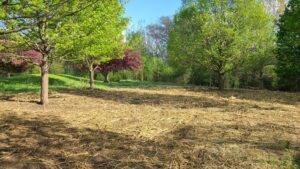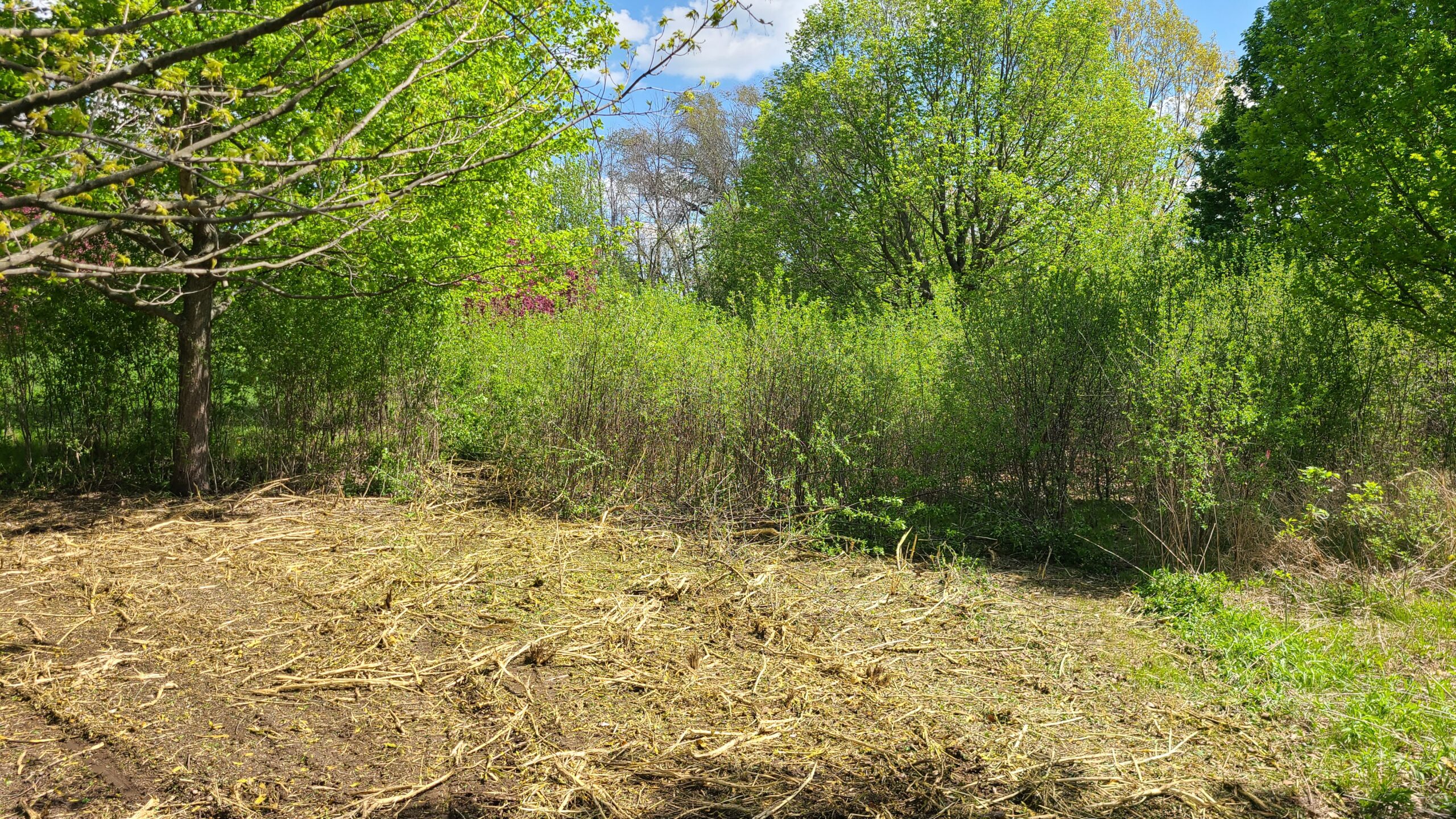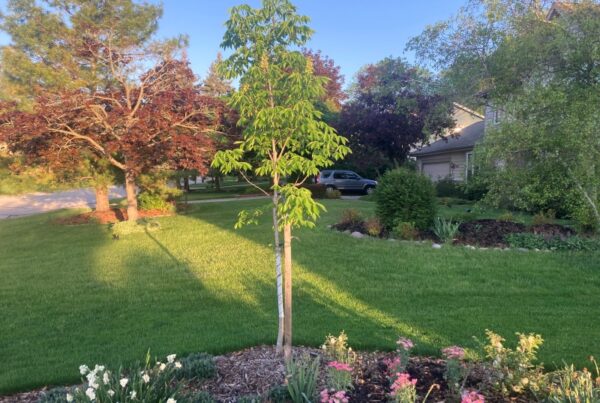Chances are the Common Buckthorn (Rhamnus cathartica) is growing somewhere on or near your landscape. You’ll recognize it by its dark colored berries and four-petaled fragrant flower, which blooms in late spring. The accolades, however, stop here.
- Buckthorn is well known throughout Wisconsin as an invasive shrub and tree that threatens forests, wetlands, prairies, and natural habitats
- It competes with native plants, often crowding them out for nutrients, moisture, and light, often leaving the soil eroded
- Buckthorn berries are poisonous to humans. Deer won’t eat the fruit, though birds and mice consume the berries and naturally spread the plant’s destructive growth
- Its reputation is so poor that it is restricted in the state.
“We cleared away a large swath of buckthorn on a property last summer,” says Dean Ziemienski, ATE Vice President. “It was striking to see the before and after comparison. Buckthorn grows on many properties throughout Southeast Wisconsin. A lot of people know about it, but not the effective strategies for getting rid of it.”

(After Common Buckthorn removal)
These are some of the mechanical and chemical options for reducing buckthorn’s impact:
- Pulling – Smaller plants can be easily removed by pulling the above-ground growth and root crown from the soil
- Cutting – Larger plants can be cut low to the ground and removed. However, stumps must be treated to prevent the undisturbed root systems from resprouting
- Mechanical Brush Mowing – The most efficient way to clear large areas of buckthorn thickets. Root systems are not removed, so follow-up applications of herbicide to newly emerging foliage after mowing is necessary
If you have issues with buckthorn, contact ATE for a consultation.




